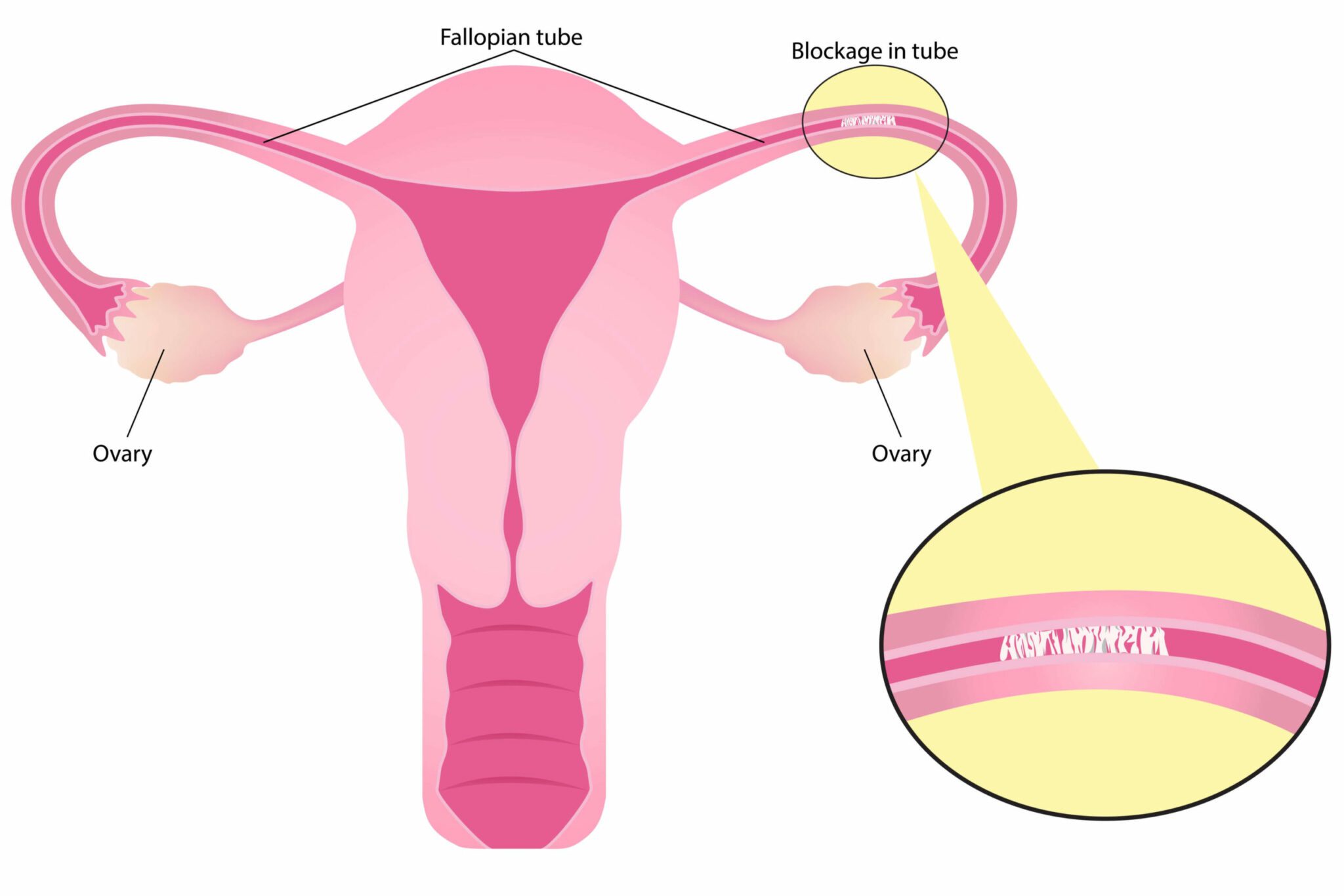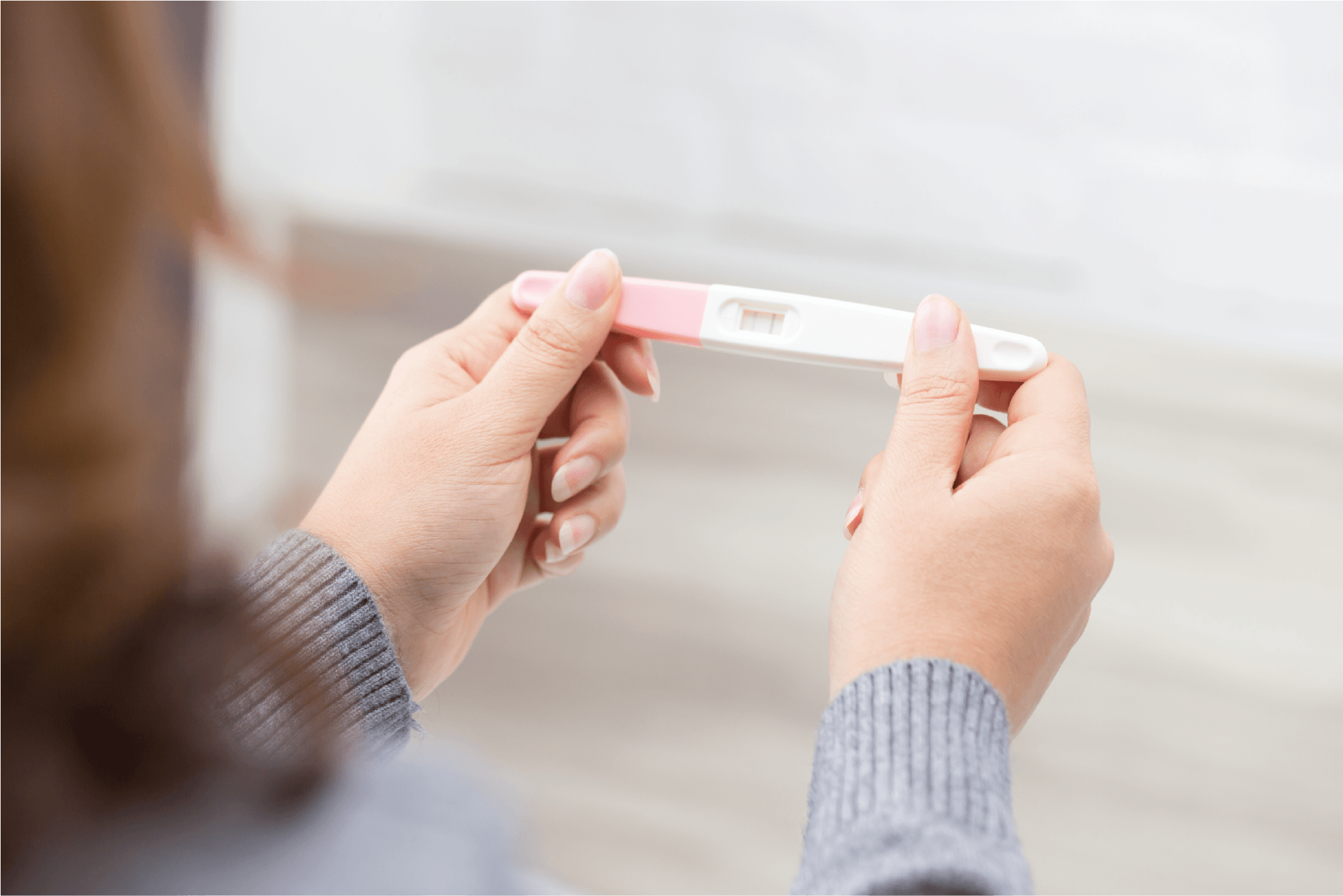Assessing the Fallopian Tube in Females who are Struggling to Conceive


- Blockages in the fallopian tube are a cause of infertility in women in 30-35% of cases.
- Tubal patency refers to how open the fallopian tubes are. If there is an obstruction this can significantly reduce a female’s likelihood of falling pregnant.
- There are various techniques a doctor will use to check the fallopian tubes.
Blockages in the fallopian tube are a common cause of infertility in women. Infertility affects approximately 15% of couples globally. It is defined as an inability to fall pregnant after 12 months of actively trying. The causes of infertility are varied and complex, with issues affecting both males and females.
In terms of female infertility, fallopian tube blockages have been implicated in 30-35% of cases. Such is their prevalence, that in cases of unexplained infertility, one of the first assessments a doctor should perform is a check of tubal patency. To be patent, is to be open or unobstructed. If the fallopian tubes are obstructed, or blocked, it can significantly reduce a female’s likelihood of falling pregnant. As such, the assessment of tubal patency is a major step in the work-up examination of women who are struggling to conceive.
You can monitor your fertility using the Nabta app for ovulation and menstrual cycle tracking.
Some of the most frequently employed techniques include:
- Hysteroscopic hydrotubation
- Hysterosalpingogram (HSG)
- Transvaginal ultrasound
- Saline-infusion sonography (SIS)
- Hysterosalpingo-contrast sonography (HyCoSy)
Hysteroscopic hydrotubation
During hydrotubation, fluid is flushed through the fallopian tubes via the cervix. As such, it is also known as tubal flushing. It can be used diagnostically alongside a laparoscopy; however, it has also been shown to function as a treatment option in cases of partial occlusion because some women who have undergone the procedure fall pregnant without the need for further treatment. Why this happens is unclear and studies performed to date are of low quality, so doctors are unlikely to recommend it as a stand-alone treatment.
Hydrotubation is sometimes offered as a precursor to assisted reproductive surgeries as it has been demonstrated to improve pregnancy rates if performed a day prior to intrauterine insemination.
This technique is safe, easy and causes only minimal discomfort.
Hysterosalpingogram (HSG)
HSG involves the injection of contrast media (dye) through the neck of the womb via a catheter and along the fallopian tubes. X-ray images are recorded at intermittent intervals. This technique often forms part of the initial screening assessment for suspected tubal infertility as it is relatively low cost and does not involve anaesthetic, unlike laparoscopy. It is usually performed between days 7 and 12 of the menstrual cycle (where day 1 is the first day of a female’s period). This is because at this point there is no possibility of pregnancy and the lining of the uterus is at optimal thickness.
The media can be oil-based or water-soluble. An analysis of 13 trials found that HSG with oil-soluble contrast media was associated with a subsequent pregnancy rate of 29-55%. In contrast, those women who did not undergo HSG had a pregnancy rate of 17%. Therefore, there is the suggestion that HSG with oil-soluble contrast media improves pregnancy and live birth rates, but the evidence is considered to be of low quality. No association was found between increased pregnancy rates and the use of water-soluble contrast media.
HSG will often miss adhesions that lie outside of the fallopian tubes, such as endometrial deposits and is unsuitable for analysing ovarian morphology. Some women will experience a reaction to the contrast media, in the form of abdominal pain; others are reluctant to undergo a technique that uses ionising radiation.
Transvaginal ultrasound
Transvaginal ultrasound is a useful tool for identifying some structural causes of female infertility, including PCOS, endometriosis and fibroids, but is generally considered less useful for determining tubal patency unless a hydrosalpinx is present. This occurs when the fallopian tube is blocked with fluid and becomes distended. Ultrasound can only work effectively when there is a tissue-fluid interface, so under normal conditions the fallopian tubes are not visible. The development of saline-infusion sonography has helped to circumvent this issue.
Saline-infusion sonography (SIS)
Saline is passed through a catheter into the uterus. As the uterus fills with the saline solution it becomes distended and the saline is forced along the fallopian tubes. Ultrasound sonography is performed continuously. Signs of a tubal blockage include an accumulation of fluid in the uterine cavity, or a lack of ‘spillage’ of saline from the end of either of the fallopian tubes. This technique can also be used to diagnose uterine pathologies such as endometriosis and polyps, as well as visualisation of the ovaries. This technique is often used in an attempt to identify the underlying cause of abnormal uterine bleeding.
SIS has been shown to give results that are comparable to those obtained with HSG and laparoscopy without the need for ionising radiation or anaesthetic. Complications are minimal and primarily due to the discomfort of having an unnaturally distended uterus. This can cause nausea and mild to moderate pain.
Hysterosalpingo-contrast sonography (HyCoSy)
HySyCo combines the principles of HSG and SIS for increased accuracy in diagnosis. The principle behind the technique is that for improved visualisation of the fallopian tubes, the contrast media should be highly echogenic to obtain a clearer image. This is done through the use of a contrast media that contains micro bubbles, which is instilled into the uterine cavity and allowed to dissipate, in a manner similar to that seen with the other visualisation techniques. Scanning equipment is similar to that used with SIS. The enhanced contrast provides a more exact localisation of any blockage.
The simplest way to perform HyCoSy is to use agitated saline solution, which is an approach similar to that used by cardiologists who wish to examine the heart in detail. There are also commercially available HyCoSy media.
In terms of effectiveness, HySyCo is considered comparable to HSG. However, it avoids the need for x-ray exposure, making it slightly safer, and it is considered to be superior to HSG at evaluating adjacent pelvic structures. Requiring no specialised equipment also makes it a relatively cost-effective first-line screening method. Perhaps the most significant drawback to the procedure is that it can have a reasonably high false positive rate due to the tortuous (highly twisted) nature of the fallopian tubes; consider that two lots of 10-12cm of tube are compacted into a very small area within the female pelvis. This can make identifying genuine blockages challenging. In cases where the problem can be localised to the fallopian tubes, HSG may remain the preferred choice.
The advent of 3D HyCoSy should improve the accuracy of the technique. However, this process comes at a higher cost and requires more specialised equipment, meaning it may not yet be available in all healthcare facilities.
In cases of unexplained infertility, the assessment of tubal patency should be a first-line approach. This article gives an overview of some of the more common techniques used for visualisation of the fallopian tubes. Alternative approaches may be required if the problem cannot be localised to the fallopian tubes.
Nabta is reshaping women’s healthcare. We support women with their personal health journeys, from everyday wellbeing to the uniquely female experiences of fertility, pregnancy, and menopause.
Get in touch if you have any questions about this article or any aspect of women’s health. We’re here for you.
Sources:
- Ranaweera, A K, et al. “Value of Sonographic Hydrotubation Using Agitated Saline as a Screening Test for Tubal Patency.” Scholars Journal of Applied Medical Sciences, vol. 1, no. 2, 2013, pp. 122–130.
- Mardanian, Farahnaz, et al. “Evaluation of Efficacy of Transvaginal Sonography with Hysteroscopy for Assessment of Tubal Patency in Infertile Women Regarding Diagnostic Laparoscopy.” Advanced Biomedical Research, vol. 7, no. 1, 25 June 2018, p. 101., doi:10.4103/abr.abr_71_17.
- Mohiyiddeen, Lamiya, et al. “Tubal Flushing for Subfertility.” Cochrane Database of Systematic Reviews, 1 May 2015, doi:10.1002/14651858.cd003718.pub4.
- Okonkwo, Onyinye Onyeka, et al. “Successful Pregnancy Following Refusal of Laparoscopy but Acceptance of Hydrotubation-Only Procedure for Bilateral Tubal Blockade.” Clinical Obstetrics, Gynecology and Reproductive Medicine, vol. 1, no. 2, 2015, pp. 40–42., doi:10.15761/cogrm.1000111.
- Panchal, Sonal, and Chaitanya Nagori. “Imaging Techniques for Assessment of Tubal Status.” Journal of Human Reproductive Sciences, vol. 7, no. 1, Jan. 2014, p. 2., doi:10.4103/0974-1208.130797.
- Phillips, Catherine H., et al. “Comparison of Uterine and Tubal Pathology Identified by Transvaginal Sonography, Hysterosalpingography, and Hysteroscopy in Female Patients with Infertility.” Fertility Research and Practice, vol. 1, no. 20, 23 Dec. 2015, doi:10.1186/s40738-015-0012-3.
- Saunders, Rhiana D., et al. “Current Methods of Tubal Patency Assessment.” Fertility and Sterility, vol. 95, no. 7, June 2011, pp. 2171–2179., doi:10.1016/j.fertnstert.2011.02.054.
- Simpson, William L., et al. “Hysterosalpingography: A Reemerging Study.” RadioGraphics, vol. 26, no. 2, 1 Mar. 2006, pp. 419–431., doi:10.1148/rg.262055109.













































